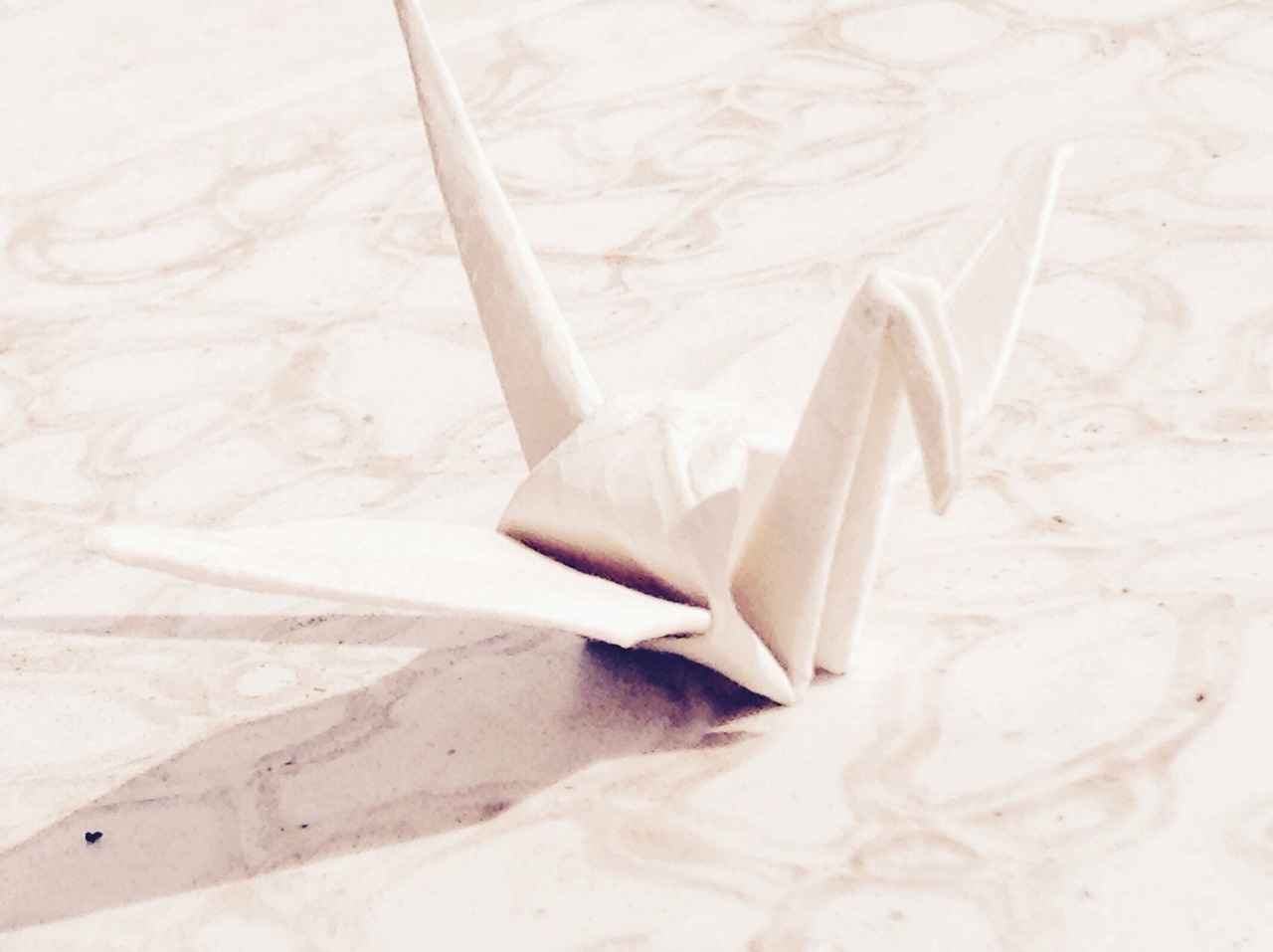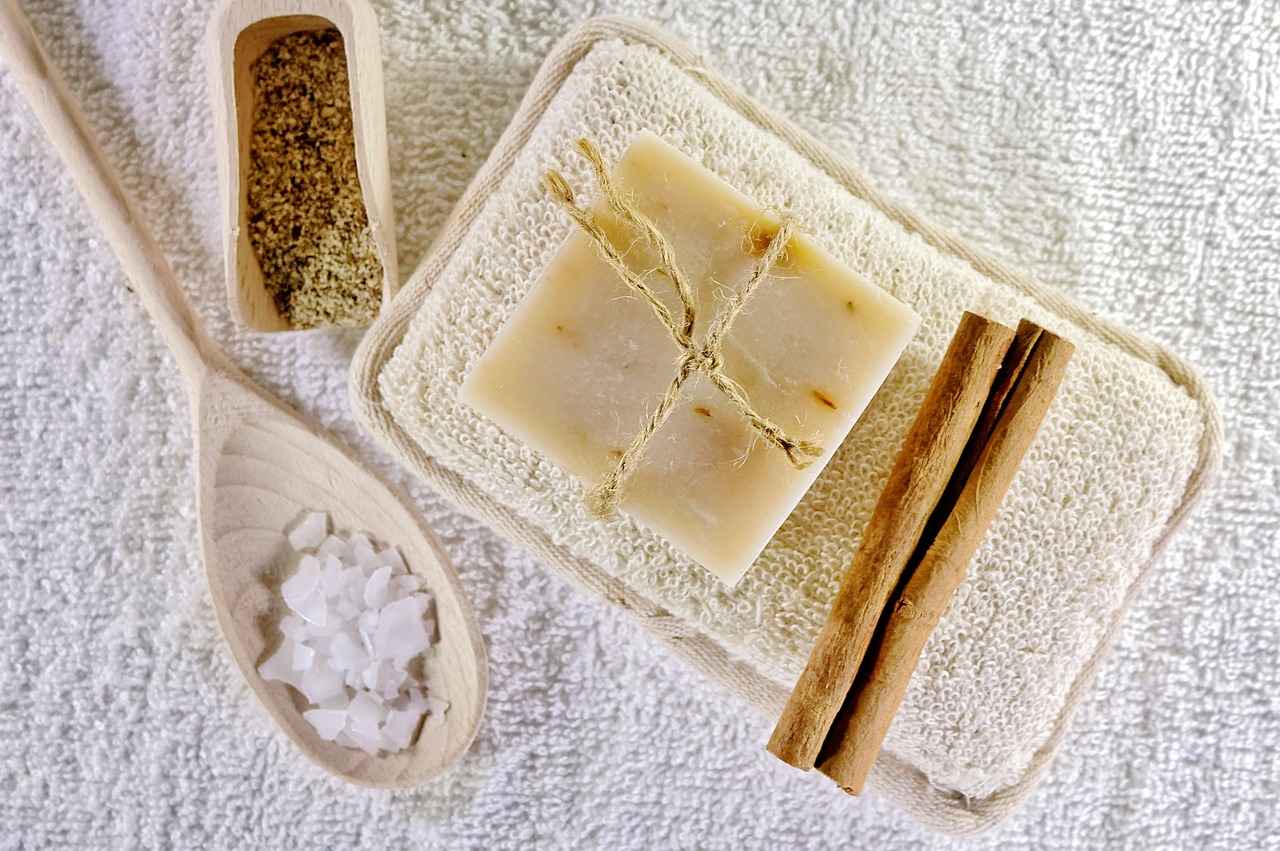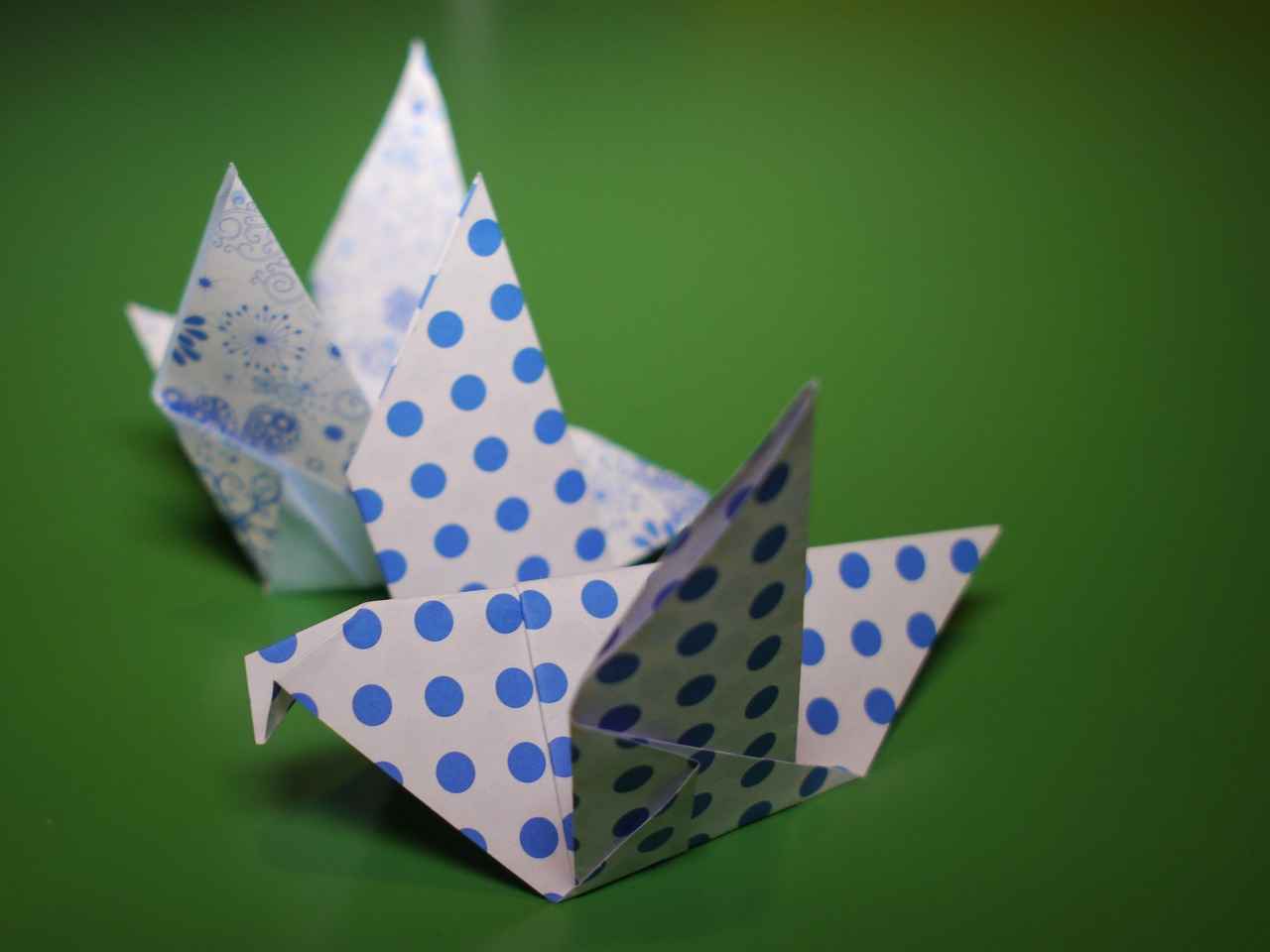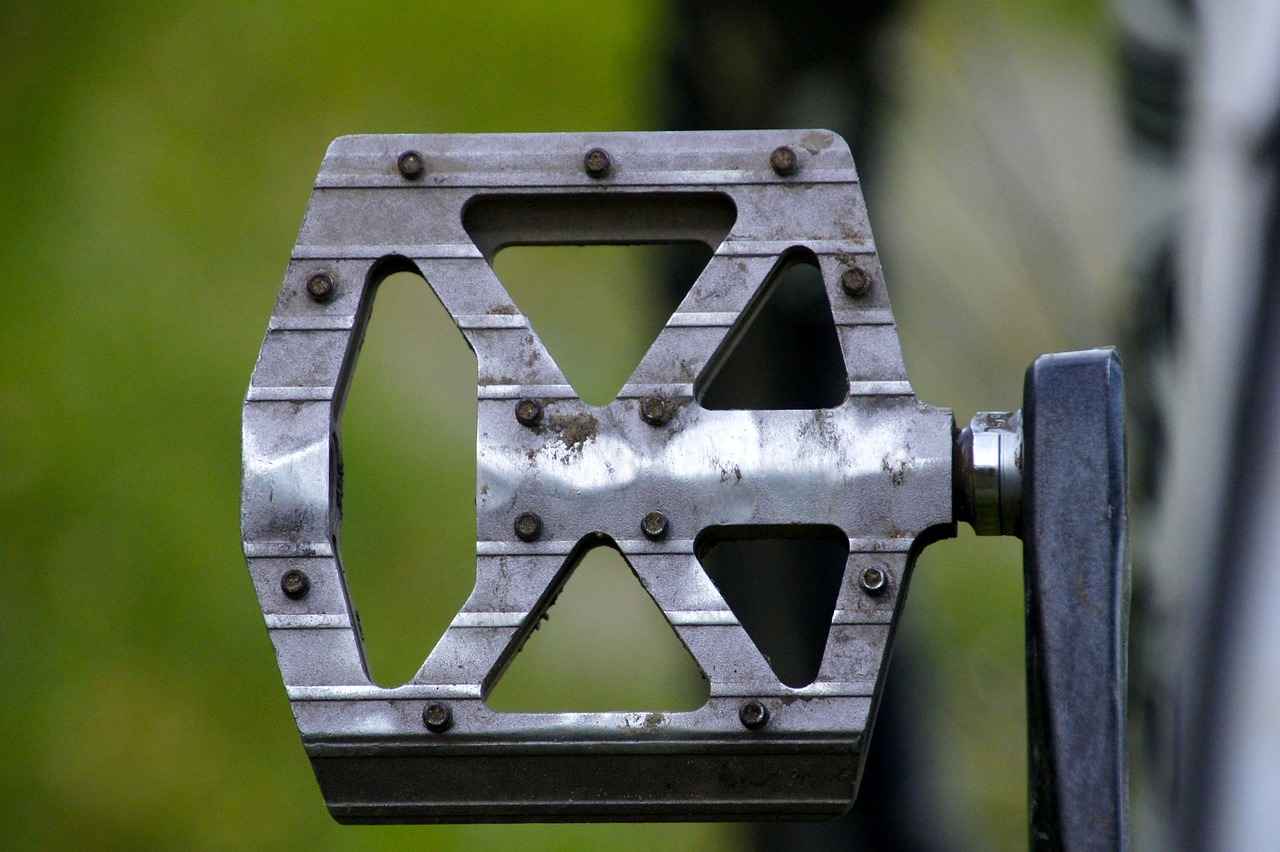This article provides a comprehensive guide on how to properly fold a slip dress to prevent creases, ensuring it remains in pristine condition for any occasion.
Understanding the significance of proper folding techniques can help maintain the quality and appearance of your slip dress, prolonging its lifespan and ensuring it looks its best when worn. Proper folding not only prevents unsightly creases but also protects delicate fabrics from wear and tear during storage.
Slip dresses can be made from various fabrics, including silk, satin, and polyester. Each material requires specific care and folding techniques to avoid damage and creasing. For instance, silk is particularly sensitive and should be treated with extra care, while polyester is more durable and can withstand a bit more handling.
Before folding, it’s essential to prepare your slip dress properly. This includes:
- Cleaning: Ensure the dress is clean and free from stains.
- Drying: Make sure it is completely dry to avoid mildew.
- Wrinkle-Free: Iron or steam the dress if necessary, as this will provide the best results when stored.
The most effective folding technique involves a simple method that minimizes creases while maximizing storage efficiency. This technique can be adapted based on the dress’s design and fabric. For example, using a rolling method can often yield better results than traditional folding.
Using a flat, clean surface is crucial when folding a slip dress. It helps ensure even folds and prevents additional creases from forming during the process. A table or a clean bedspread works well for this purpose.
A detailed, step-by-step guide on folding a slip dress can simplify the process, making it easy for anyone to follow and achieve the desired outcome without damaging the fabric.
Begin by laying the slip dress flat on the surface, ensuring it is smooth and free of wrinkles. This initial step sets the foundation for proper folding.
Carefully fold the straps inward towards the center of the dress. This helps prevent them from tangling and protects them from potential damage during storage.
Next, fold the dress in half vertically, bringing the hem up to meet the neckline. This method reduces the overall size and minimizes creasing.
Depending on your storage preference, you can either roll the dress gently or fold it into thirds. Rolling often reduces creasing better than traditional folding.
Choosing the right storage option is vital for maintaining your slip dress’s condition. Options include:
- Hanging: Ideal for silk and delicate fabrics.
- Rolling: Great for travel and reduces creasing.
- Stacking: Good for limited space but requires careful handling.
Proper storage techniques can significantly reduce the likelihood of creases forming. Consider factors such as:
- Environment: Keep in a cool, dry place.
- Garment Bags: Use breathable bags to protect from dust.
- Careful Stacking: Avoid heavy items on top to prevent crushing.
Identifying and avoiding common folding mistakes can save you time and frustration. Common pitfalls include:
- Not Preparing the Dress: Folding a wrinkled dress can set creases.
- Improper Surface: Folding on a dirty or uneven surface can cause additional wrinkles.
- Tight Folding: Folding too tightly can damage fabrics.

Why is Folding Important for Slip Dresses?
When it comes to maintaining the beauty and integrity of your slip dress, understanding the importance of proper folding techniques is essential. Slip dresses are often made from delicate fabrics that can easily be damaged or creased. Therefore, knowing how to fold them correctly not only preserves their appearance but also extends their lifespan.
Proper folding techniques are crucial for several reasons:
- Prevention of Creases: Slip dresses are typically made from materials like silk, satin, or lightweight cotton, which are prone to creasing. By folding them correctly, you significantly reduce the risk of unsightly wrinkles that can detract from the dress’s elegance.
- Maintenance of Shape: Slip dresses often have a specific silhouette that can be distorted by improper storage. Folding helps maintain the dress’s shape, ensuring it looks just as good when you wear it as it did the day you bought it.
- Ease of Storage: A well-folded slip dress occupies less space, making it easier to store in your wardrobe or suitcase. This is especially important for those who travel frequently and need to pack efficiently.
- Prolonged Lifespan: By taking the time to fold your slip dress properly, you are investing in its longevity. Avoiding unnecessary wear and tear can save you money in the long run, as you won’t need to replace your favorite dress as often.
Moreover, the way you fold your slip dress can also impact how quickly you can get ready for an occasion. A neatly folded dress is easier to access and wear, allowing you to focus on other aspects of your outfit.
Understanding the fabric composition of your slip dress is vital. Different materials require different care and folding techniques. For instance, silk slip dresses need extra care to avoid snags, while cotton ones are more durable but can still crease if not folded correctly. Knowing the specific needs of your dress will help you choose the right folding method.
Before you begin the folding process, ensure that your slip dress is clean and dry. A clean dress not only looks better but also prevents any stains from setting in during storage. If you notice any wrinkles, consider steaming or ironing the dress on a low setting to achieve a smooth finish.
The best folding technique for slip dresses involves a simple yet effective method that minimizes creases. Start by laying the dress flat on a clean surface, then carefully fold the straps inwards to prevent tangling. Next, fold the dress in half vertically, bringing the hem up to meet the neckline. Finally, you can either roll the dress gently or fold it into thirds, depending on your storage preferences.
Using a flat, clean surface is essential when folding a slip dress. This ensures that the folds are even and prevents additional creases from forming during the process. A clutter-free workspace allows you to focus on achieving the best results.
When it comes to storing your slip dress, consider options such as hanging, rolling, or stacking. Each method has its advantages and disadvantages. Hanging is great for preventing creases but requires ample space, while rolling can save space but may not be suitable for all fabrics.
Proper storage techniques can significantly reduce the likelihood of creases forming. Consider using breathable garment bags for hanging dresses, or choose a drawer lined with tissue paper for folded dresses. Avoid overcrowding your storage space to allow the fabric to breathe.
Identifying common folding mistakes can save you time and frustration. Avoid folding your slip dress when it’s still damp, as this can lead to permanent creases. Additionally, be cautious of sharp objects nearby that could snag the fabric. Always handle the dress gently to maintain its integrity.

What Materials are Slip Dresses Made Of?
Slip dresses are a timeless wardrobe staple that can effortlessly transition from day to night. However, to maintain their elegance and allure, it is crucial to understand the various materials they are made from and how these fabrics influence care and folding techniques. In this section, we will explore the different fabrics commonly used for slip dresses, their characteristics, and the best practices for handling them.
Slip dresses can be crafted from a variety of fabrics, each offering unique benefits and requiring specific care. Understanding these materials is essential for preserving the dress’s quality and appearance. Here are some of the most common fabrics used in slip dresses:
- Silk: Known for its luxurious feel and natural sheen, silk is a popular choice for slip dresses. It drapes beautifully but is also prone to wrinkling. To care for silk, it is best to hand wash or dry clean and fold carefully to avoid creases.
- Satin: Similar to silk in appearance, satin is often made from polyester or nylon. It is durable and less expensive than silk but can also crease easily. Use a gentle folding technique and store satin dresses in a cool, dry place.
- Chiffon: Lightweight and sheer, chiffon adds a romantic touch to slip dresses. It is delicate and can snag easily, so it is essential to fold it gently and avoid heavy stacking.
- Cotton: Cotton slip dresses are breathable and comfortable, making them ideal for casual wear. They are generally more resilient to creasing and can be machine washed. However, proper folding is still recommended to maintain their shape.
- Rayon: This semi-synthetic fabric mimics the feel of silk and drapes well. Rayon can wrinkle easily, so it should be folded with care and stored away from direct sunlight to prevent fading.
Each fabric type presents its own challenges and benefits, making it crucial to tailor your care routine accordingly. Knowing the material helps in choosing the right method for washing, drying, and folding, ensuring your slip dress remains in pristine condition.
Understanding the fabric of your slip dress is vital for several reasons:
- Care Requirements: Each material has unique washing and drying needs. For instance, silk requires more delicate handling compared to cotton.
- Folding Techniques: The way you fold a slip dress can significantly impact its longevity. Certain fabrics may require specific folding methods to prevent damage.
- Storage Solutions: Knowing the fabric can help you choose the best storage solution—whether to hang or fold—based on its characteristics.
In conclusion, being aware of the materials used in slip dresses can greatly enhance your ability to care for them effectively. By tailoring your approach based on the specific fabric, you can ensure that your slip dresses remain elegant and free from creases, ready to wear for any occasion.

How to Prepare Your Slip Dress for Folding?
When it comes to caring for your slip dress, proper preparation before folding is crucial. This ensures that your dress remains in pristine condition and ready for any occasion. Here are the essential steps to prepare your slip dress for folding:
- Cleaning: Before you even think about folding your slip dress, it’s important to wash it according to the care instructions on the label. Use a gentle detergent and avoid harsh chemicals that could damage delicate fabrics. If your dress is particularly dirty or stained, consider spot cleaning or taking it to a professional cleaner.
- Drying: After washing, ensure that your slip dress is dried properly. Hang it up to air dry, as using a dryer can cause shrinkage or damage the fabric. Avoid direct sunlight, which can fade colors over time. If you must use a dryer, opt for a low heat setting and remove the dress while it’s still slightly damp.
- Wrinkle Removal: Once your dress is clean and dry, check for any wrinkles. If you find any, gently steam the dress or use a fabric iron on the appropriate setting. Be cautious with the heat, especially with materials like silk or satin, as high temperatures can cause burns or shiny spots.
- Inspect for Damage: Take a moment to inspect your slip dress for any signs of damage such as loose threads, small tears, or missing beads. Address any issues before folding to prevent further damage during storage.
Folding a wrinkled slip dress can lead to permanent creases that are difficult to remove. By ensuring your dress is wrinkle-free before folding, you maintain its sleek appearance and prolong its lifespan. A well-maintained slip dress not only looks better but also feels better when worn, enhancing your overall confidence and style.
Preparing your slip dress properly before folding has several benefits:
- Preservation: Proper care and preparation help preserve the fabric’s integrity, ensuring your dress lasts longer.
- Ease of Use: A wrinkle-free dress is easier to wear and style, saving you time when getting ready for an event.
- Enhanced Appearance: A well-prepared dress will look more polished and put-together, making a better impression on others.
To streamline the preparation process, consider creating a routine. Establish a specific day for laundry and maintenance of your slip dresses. This not only keeps your dresses in excellent condition but also makes it easier to manage your wardrobe. Additionally, investing in quality hangers and storage solutions can further protect your dresses from damage.
In conclusion, taking the time to properly prepare your slip dress before folding can make a significant difference in its longevity and appearance. By following these steps, you ensure that your slip dress remains a staple in your wardrobe, ready for any occasion.

What is the Best Folding Technique for Slip Dresses?
When it comes to caring for your slip dress, understanding the best folding technique is essential. Not only does this method help in minimizing creases, but it also maximizes storage efficiency. The right approach can vary depending on the design and fabric of the dress, making it crucial to adapt your technique accordingly.
Folding your slip dress correctly is vital for preserving its fabric and structure. A slip dress is often made from delicate materials like silk, satin, or chiffon, which can easily become creased or damaged if not handled properly. By using the right folding technique, you can ensure that your dress remains in pristine condition, ready for any occasion.
Slip dresses can be constructed from various fabrics, each requiring specific care. For instance, silk is luxurious but can be prone to wrinkling, while polyester blends may hold their shape better. Knowing the material of your dress can help you choose the most effective folding method to prevent damage.
Before you begin folding, it’s essential to prepare your slip dress properly. Make sure it is clean and completely dry. If the dress has any wrinkles, consider steaming or lightly pressing it to achieve a smooth surface. This preparation will help you achieve the best results when storing your dress.
- Step 1: Lay the Dress Flat – Start by laying your slip dress flat on a clean, smooth surface. Ensure that it is free of wrinkles to create a solid foundation for folding.
- Step 2: Fold the Straps – Gently fold the straps inward toward the center of the dress. This prevents them from tangling and protects them from potential damage during storage.
- Step 3: Fold in Half – Next, fold the dress in half vertically, bringing the hem up to meet the neckline. This step reduces the overall size while minimizing creases.
- Step 4: Roll or Fold – Depending on your storage preference, you can either roll the dress gently or fold it into thirds. Rolling is often more effective in reducing creases compared to traditional folding.
After folding, consider how you will store your slip dress. Hanging is often recommended for delicate fabrics, as it prevents creases and allows the fabric to breathe. If you prefer to stack your dresses, ensure they are placed in a way that minimizes pressure on the fabric. Using garment bags can also protect your dress from dust and potential snags.
When folding your slip dress, be aware of common mistakes that can lead to unwanted creases. Avoid folding the dress too tightly, as this can create pressure points. Additionally, steer clear of folding it on rough surfaces that could snag or damage the fabric. Taking your time and being gentle during the process will ensure your dress remains in excellent condition.
By following these guidelines and adapting your folding technique to suit your slip dress, you can maintain its beauty and longevity. With a little care, your slip dress will be ready to wear whenever you need it, looking as stunning as the day you bought it.

Should You Use a Flat Surface for Folding?
When it comes to caring for your slip dress, proper folding techniques are essential. One of the most critical aspects of this process is the choice of surface on which you fold the garment. Using a flat, clean surface is crucial when folding a slip dress. This practice not only helps ensure even folds but also prevents additional creases from forming during the process.
Why is a flat surface so important? The answer lies in the way fabrics behave. When you fold a slip dress on an uneven surface, the fabric can shift or bunch up, leading to unwanted creases that can be difficult to remove later. A flat surface provides stability, allowing you to lay the dress out smoothly, which is vital for achieving a neat and tidy fold.
In addition, a clean surface is equally important. Dust and dirt particles can transfer onto the fabric, potentially causing stains or discoloration over time. Before you begin folding, ensure that the area is free from any debris. This simple step can save you from future headaches and keep your slip dress looking its best.
Furthermore, the type of material your slip dress is made from can also dictate how you should approach folding. For instance, silk and satin are more prone to creasing than cotton or polyester. Therefore, laying the dress on a soft, flat surface can help minimize the risk of creases, especially for delicate fabrics. Consider using a clean table, a large bed, or even a dedicated folding board to create the ideal environment for this task.
When you lay your slip dress flat, take a moment to smooth out any wrinkles before you begin folding. This will not only make the folding process easier but also ensure that your dress maintains its shape and style. Remember, the goal is to preserve the garment’s appearance and prolong its lifespan.
In summary, using a flat, clean surface is not just a suggestion; it is a crucial step in the process of folding a slip dress. It guarantees that you achieve even folds while preventing additional creases from forming. By taking the time to prepare your folding area, you are investing in the longevity and beauty of your slip dress.
So, next time you need to fold your slip dress, remember these tips. A little attention to detail can go a long way in keeping your favorite garments looking fabulous for years to come.

How to Fold a Slip Dress Step-by-Step?
Folding a slip dress may seem straightforward, but doing it correctly is essential to maintain its elegance and prevent unsightly creases. This detailed, step-by-step guide will walk you through the process, ensuring that you can achieve the desired outcome without damaging the fabric.
Follow these simple steps to fold your slip dress effectively:
- Step 1: Lay the Dress Flat
Start by laying your slip dress on a clean, flat surface. Smooth out any wrinkles or folds to create a pristine foundation. This initial step is crucial as it sets the stage for proper folding. - Step 2: Fold the Straps
Gently fold the straps inward towards the center of the dress. This prevents them from tangling and protects them from potential damage during storage. Make sure the straps are neatly tucked away. - Step 3: Fold the Dress in Half
Next, fold the dress in half vertically, bringing the hem up to meet the neckline. This reduces the overall size of the dress and minimizes creasing, making it easier to store. - Step 4: Roll or Fold the Dress
Depending on your storage preference, you can either gently roll the dress or fold it into thirds. Rolling is often more effective in reducing creases compared to traditional folding methods, especially for delicate fabrics.
By following these steps, you can ensure that your slip dress remains in excellent condition, ready for any occasion. Remember that the key is to be gentle and methodical throughout the process.
For the best results, consider the following tips:
- Use a Soft Surface: A soft surface can help prevent the fabric from snagging while you fold.
- Avoid Overcrowding: When storing folded dresses, avoid overcrowding to minimize creasing.
- Consider Fabric Type: Different materials may require specific folding techniques. Always check the care label for guidance.
In summary, folding a slip dress correctly is essential for maintaining its beauty and longevity. By following this step-by-step guide and implementing the additional tips, you can ensure that your slip dress is always ready to shine.
Step 1: Lay the Dress Flat
When it comes to caring for your slip dress, the first step is crucial for maintaining its elegance and quality. Begin by laying the slip dress flat on a clean, even surface. This ensures that the fabric is smooth and free of wrinkles, which is essential for the subsequent folding process. A well-prepared foundation not only simplifies the folding technique but also plays a significant role in preventing unwanted creases that can detract from the dress’s appearance.
To achieve the best results, make sure to choose a surface that is large enough to accommodate the entire dress without any part of it hanging off the edge. This helps maintain the integrity of the fabric and allows for a more precise folding method. Using a flat surface minimizes the risk of additional creasing that can occur if the dress is improperly handled or if it hangs awkwardly during the folding process.
Once the dress is laid flat, take a moment to inspect the fabric for any existing wrinkles or creases. If you notice any, it’s advisable to gently steam or iron the fabric according to the care instructions specific to the material of your slip dress. This step ensures that the dress is in optimal condition before you begin folding.
Next, check the straps and any embellishments that might snag or get tangled during the folding process. Carefully adjust the straps so they lie flat against the dress. This not only protects them from damage but also contributes to a neater fold, making the final result more visually appealing.
After ensuring everything is smooth, you are ready to proceed to the next steps of the folding process. Remember, the way you start will influence the overall outcome. By taking the time to lay your slip dress flat and ensuring it is wrinkle-free, you set the stage for effective storage and longevity of the garment.
In summary, laying the slip dress flat is not just a preliminary step; it is a vital part of the folding process that can significantly impact the condition of your dress. By following these guidelines, you can ensure that your slip dress remains in pristine condition, ready to dazzle on any occasion.
Step 2: Fold the Straps
When it comes to preserving the beauty of your slip dress, every detail matters, especially during the folding process. is a crucial part of this procedure. By carefully folding the straps inward towards the center of the dress, you not only prevent tangling but also shield them from potential damage during storage.
Many people overlook the importance of strap management, but doing so can lead to unnecessary wear and tear. Here’s why this step is essential:
- Prevention of Tangling: Straps that are left hanging can easily become tangled with other garments. This can lead to frustrating situations when you’re ready to wear your dress.
- Protection from Damage: Loose straps may get caught on other items in your storage space, leading to potential rips or tears. Folding them inward helps mitigate this risk.
- Maintaining Shape: By folding the straps in, you help the dress maintain its intended silhouette, ensuring it looks perfect when you’re ready to wear it.
To execute this step effectively, follow these simple guidelines:
- Start with a Smooth Surface: Ensure your slip dress is laid out flat on a clean, smooth surface. This will help prevent any additional creases from forming during the folding process.
- Gently Gather the Straps: With both hands, gently gather the straps at the top of the dress. Avoid pulling too hard to prevent stretching or distorting the fabric.
- Fold Inward: Carefully fold the straps inward towards the center of the dress. Aim for a neat fold that doesn’t create additional bulk.
- Check for Evenness: Make sure that both straps are folded evenly. This will not only keep them secure but also maintain the overall shape of the dress.
After successfully folding the straps, you can proceed to the next steps of folding the dress itself. Remember, every little action counts when it comes to garment care.
In conclusion, taking the time to fold the straps of your slip dress properly is a simple yet effective way to protect your investment. By following these guidelines, you ensure that your dress remains in excellent condition, ready for any occasion.
Step 3: Fold the Dress in Half
When it comes to taking care of your slip dress, proper folding techniques are essential. Not only do they help save space, but they also ensure that your dress remains free of unsightly creases. In this section, we will delve deeper into the process of folding your slip dress in half, a crucial step in maintaining its pristine condition.
Folding the dress in half vertically is a technique that offers multiple advantages. First and foremost, it reduces the overall size of the garment, making it easier to store in drawers or on shelves. Additionally, this method minimizes the formation of creases, which can be a common issue with delicate fabrics.
To properly fold your slip dress in half, follow these steps:
- Ensure the Dress is Clean and Dry: Before folding, make sure your dress is free from stains and moisture.
- Lay the Dress Flat: Place the slip dress on a clean, flat surface. Smooth out any wrinkles to create a neat foundation.
- Align the Hem and Neckline: Bring the hem of the dress up to meet the neckline, ensuring the sides are aligned. This step is crucial for achieving an even fold.
While folding, pay attention to the fabric type of your slip dress. Different materials, such as silk or satin, may require more gentle handling to avoid damage. Always be cautious and avoid pulling or stretching the fabric excessively.
Yes, the half-folding technique can be adapted for various types of dresses. However, it is essential to consider the specific design and fabric of each dress. For instance, dresses with embellishments may require extra care to prevent damage.
Once you have successfully folded your slip dress in half, consider the following tips for storage:
- Use Garment Bags: If possible, place the folded dress in a breathable garment bag to protect it from dust.
- Avoid Overcrowding: Ensure that your slip dress has enough space in your storage area to prevent additional creases from forming.
- Monitor the Environment: Keep your dresses in a cool, dry place to avoid moisture buildup, which can lead to mildew.
Folding your slip dress in half is a straightforward yet effective method to maintain its beauty and longevity. By following these steps and tips, you can ensure that your dress remains in excellent condition, ready for any occasion. Remember, the way you handle and store your garments can significantly impact their lifespan, so take the time to do it right!
Step 4: Roll or Fold the Dress
When it comes to storing your slip dress, the technique you choose can significantly impact its appearance and longevity. is a crucial part of the process that can help you maintain the dress’s pristine condition.
Depending on your storage preference, you can either roll the dress gently or fold it into thirds. Each method has its advantages, and understanding these can help you make an informed decision.
Rolling your slip dress is often considered a superior method for storage. This technique minimizes creasing, as the fabric is less likely to be subjected to harsh folds that can create unsightly lines. When you roll the dress, you create a compact shape that fits neatly into your storage space, whether it’s a drawer or a suitcase. Additionally, rolling can help protect delicate fabrics from snagging or stretching, especially if your slip dress is made from materials like silk or satin.
- Lay the Dress Flat: Start by laying the dress on a clean, flat surface. Smooth out any wrinkles to ensure a tidy roll.
- Fold the Straps: Tuck the straps inwards to avoid tangling. This will keep them protected and make the rolling process easier.
- Begin Rolling: Starting from the hem, roll the dress tightly but gently towards the neckline. Ensure that the fabric remains smooth as you roll to prevent creases.
- Store Properly: Once rolled, place the dress in a protective garment bag or a soft container to keep it safe from dust and damage.
Folding the slip dress into thirds is another effective method, especially if you have limited storage space or prefer a more structured approach. This technique allows for easy stacking and can be beneficial if you are organizing multiple dresses. However, it is essential to do it correctly to avoid creating creases.
- Lay the Dress Flat: Just like rolling, start by laying the dress flat on a clean surface.
- Fold the Straps: Tuck the straps in towards the center to keep them secure and prevent any damage.
- Fold in Half: Bring the hem up to meet the neckline, creating a vertical fold.
- Fold into Thirds: Now, take the left side of the dress and fold it over the center, then fold the right side over the left. This method creates a compact, neat package.
The choice between rolling and folding ultimately depends on your personal preference and the specific fabric of your slip dress. If you are traveling or need to save space, rolling might be the best option. On the other hand, if you are storing your dress at home and have the space, folding can keep it organized and easily accessible.
Regardless of the method you choose, the key is to handle your slip dress with care to ensure it remains in excellent condition for years to come. By following these techniques, you can confidently store your dress without worrying about unwanted creases.

What Storage Options are Best for Slip Dresses?
When it comes to preserving the elegance and quality of your slip dress, choosing the right storage option is absolutely vital. The way you store your slip dress can significantly impact its condition, helping you avoid unsightly creases and damage over time. In this guide, we will explore the various storage methods available and discuss their pros and cons to help you make an informed decision.
One popular method for storing slip dresses is hanging. This technique allows the fabric to hang freely, which can help prevent creases. However, it’s essential to use appropriate hangers to avoid stretching the straps or distorting the shape of the dress. Velvet or padded hangers are ideal as they provide grip and support. The downside to hanging is that it requires ample closet space and may expose the dress to dust.
Another effective method is rolling the dress. This technique can be particularly beneficial if you have limited storage space. Rolling minimizes creases by allowing the fabric to maintain its natural shape without harsh folds. To roll your slip dress, start by laying it flat, folding the straps inward, and then rolling it from the hem to the neckline. While rolling is space-efficient, it may not be suitable for all fabrics, especially delicate ones that could be damaged by friction.
Stacking is another common storage method, especially if you have multiple dresses to store. This involves neatly folding the dress and placing it on top of others in a drawer or on a shelf. While stacking can save space, it may lead to creasing if the dresses are not stored properly. To mitigate this, consider using tissue paper between layers to cushion the fabric and prevent unnecessary wrinkles.
Regardless of the method you choose, environmental factors play a crucial role in maintaining your slip dress’s condition. Ensure that your storage area is cool, dry, and dark to avoid moisture and sunlight damage. Using breathable garment bags can also help protect your dress from dust and pests while allowing air circulation.
Ultimately, the best storage option for your slip dress depends on your specific needs and available space. Each method—hanging, rolling, or stacking—has its advantages and disadvantages. By understanding these factors and considering the fabric of your dress, you can choose a storage solution that keeps your slip dress looking fabulous for years to come.

How to Store Slip Dresses to Prevent Creases?
When it comes to preserving the elegance of your slip dresses, understanding how to store them properly is crucial. Proper storage techniques can significantly reduce the likelihood of creases forming, ensuring your dress remains in top condition for any occasion. In this article, we will explore various methods and tips to help you store your slip dresses effectively.
Slip dresses are often made from delicate fabrics that can easily wrinkle. The way you store your dresses can greatly affect their appearance and longevity. By implementing the right storage techniques, you can prevent creases and maintain the dress’s original beauty.
- Environment: Store your dresses in a cool, dry place. High humidity can lead to mold and mildew, while excessive heat can damage the fabric.
- Garment Bags: Invest in breathable garment bags designed for delicate fabrics. These bags protect your dresses from dust and potential snags.
- Careful Stacking: If you choose to stack your dresses, ensure they are neatly folded and not too tightly packed. This minimizes pressure on the fabric, reducing the chance of creases.
Hanging your slip dresses can be one of the most effective storage methods. Use padded hangers to prevent the straps from stretching. Ensure the dress is hung straight to avoid any unwanted creases.
While hanging is a popular method, rolling your slip dress can also be beneficial, especially for travel. Rolling minimizes creases by allowing the fabric to rest evenly. When folding, follow the steps outlined in our previous sections to ensure minimal creasing.
For those who prefer folding their dresses, consider placing acid-free tissue paper between layers. This extra layer can help absorb moisture and prevent creases from forming during storage.
Periodically check on your stored dresses. This allows you to address any potential issues, such as moisture or pests, before they cause significant damage.
- Ignoring Fabric Care Labels: Always follow the care instructions specific to your dress fabric.
- Overstuffing Storage Spaces: Avoid cramming multiple dresses into a single space, as this can lead to creasing and damage.
- Using Plastic Covers: Avoid plastic garment bags, as they can trap moisture and promote mildew.
By following these guidelines, you can ensure that your slip dresses remain in pristine condition, ready to dazzle at any event. Remember, the right storage techniques not only help prevent creases but also prolong the lifespan of your cherished garments.

What are Common Mistakes When Folding Slip Dresses?
When it comes to caring for your slip dress, understanding common folding mistakes is essential. Proper folding not only preserves the fabric but also ensures that your dress is ready to wear without any unwanted creases. Below, we explore the most frequent pitfalls to avoid when folding your slip dress.
- Skipping the Preparation Step: One of the most significant mistakes is not preparing your slip dress before folding. Always ensure the dress is clean and completely dry. Folding a damp or dirty dress can lead to permanent stains and odors.
- Using an Uneven Surface: Folding on a surface that isn’t flat can create uneven folds, leading to creases. Always choose a smooth, clean area to lay your dress flat before folding.
- Neglecting the Straps: Many people forget to secure the straps when folding. Straps can easily tangle or get stretched out, affecting the dress’s overall shape. Always fold them inward to protect them.
- Folding Too Tightly: While it may seem practical to fold your dress tightly to save space, this can actually cause creases. Instead, opt for a looser fold or consider rolling your dress to minimize pressure on the fabric.
- Ignoring Fabric Type: Different materials require different handling. For instance, silk is more delicate than cotton. Not adjusting your folding technique based on the fabric can lead to damage. Always know your material and fold accordingly.
- Forgetting to Smooth Out Wrinkles: Before folding, it’s crucial to smooth out any wrinkles. This step helps in reducing the chances of new creases forming during storage. A quick run with your hands can make a significant difference.
- Not Storing Properly After Folding: Once folded, how you store your slip dress is just as important as how you fold it. Avoid stacking heavy items on top of your dress, as this can create unwanted pressure and creases.
By being aware of these common mistakes, you can effectively maintain the quality of your slip dress. Remember, a little extra care during folding can go a long way in preserving the beauty and longevity of your garment. Always take the time to prepare, fold, and store your slip dress correctly, ensuring it remains a staple in your wardrobe for years to come.
Frequently Asked Questions
- How can I prevent my slip dress from creasing?
To keep your slip dress looking fresh, always fold it properly and store it in a cool, dry place. Using garment bags can also help protect it from dust and moisture.
- What should I do if my slip dress gets wrinkled?
If your dress has wrinkles, try hanging it in a steamy bathroom or use a fabric steamer. Ironing on a low setting with a cloth can also help, but always check the fabric care label first!
- Is it better to hang or fold my slip dress?
Hanging is often recommended to prevent creases, especially for delicate fabrics. However, if space is tight, folding it using the right technique can work just as well!
- Can I wash my slip dress in a washing machine?
It depends on the fabric! Always check the care label. If it’s machine washable, use a gentle cycle and place it in a mesh laundry bag to protect it.
- What types of materials are common for slip dresses?
Slip dresses are typically made from silk, satin, or polyester. Each material has its own care requirements, so knowing what yours is made of can help you take better care of it!


